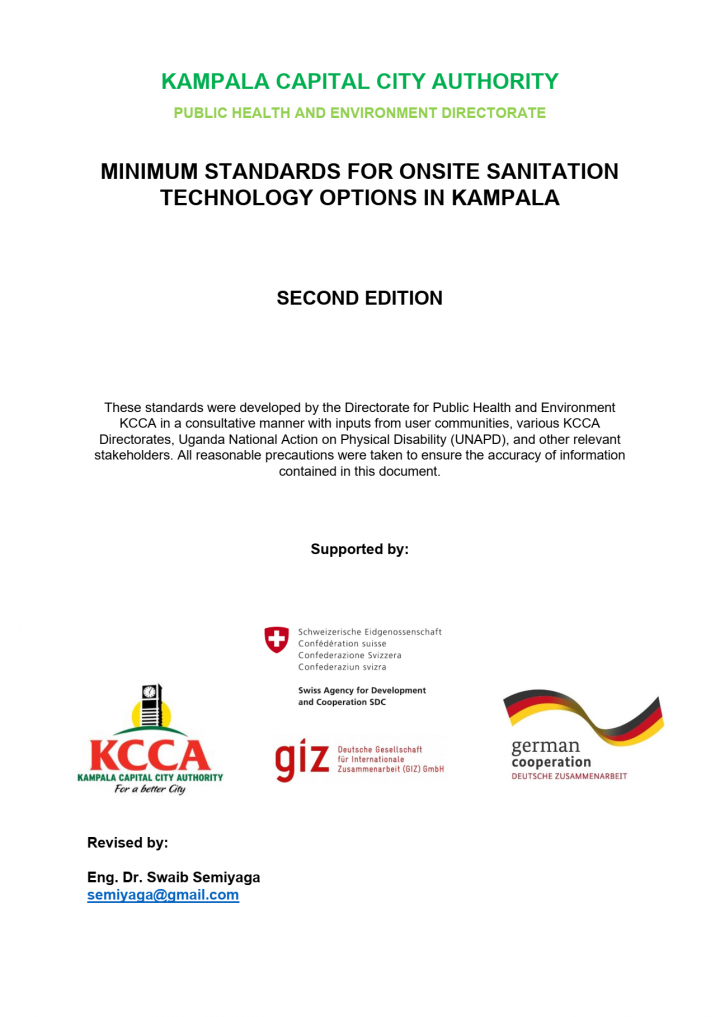Minimum Standards for Onsite Sanitation Technology Options in Kampala
Directorate for Public Health and Environment KCCA (n.d.)

Published in: n.d.
Pages: 36
Publisher:
Directorate for Public Health and Environment KCCA
Author:
Directorate for Public Health and Environment KCCA
Uploaded by:
SuSanA secretariat
Partner profile:
common upload
1116 Views
32 Downloads
Availability of adequate sanitation services is one of the most significant development challenges experienced in the rapidly growing Kampala city. Over 90% of Kampala’s population relies on on-site sanitation which include flush (pour and cistern) toilets, Urine Diversion Dehydrating Toilets (UDDTs), Ventilated Improved Pit Latrines (VIPs) and traditional pit latrines.
The toilets are put up by individuals and different institutions with no proper guidance to inform planning, construction and enforcement. Current practice involves relying on unguided previous experience to define what qualifies as an acceptable toilet facility. Legal provisions broadly define the requirement for a sanitation facility and some guidelines are inconsistent with each other. The Sustainable Development Goals (SDGs) define adequate sanitation to include safe excreta management and hand washing. Therefore, all toilets must have provisions for proper emptying and / or treatment of faecal sludge as well as a hand washing facility. In the absence of explicit legal provisions and consistent sanitation guidelines for, amongst others, the need for minimum standards is apparent.
Bibliographic information
Directorate for Public Health and Environment KCCA (n.d.). Minimum Standards for Onsite Sanitation Technology Options in Kampala. Directorate for Public Health and Environment KCCA
Filter tags
English Guidelines and manuals Import to Sanitation Workers Platform Sub-Saharan Africa














